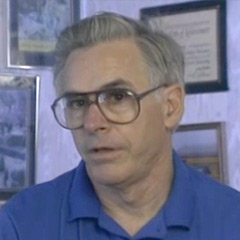
Using Sand and Natural Materials in a Model Train Base
Gil FreitagModel railroaders have various methods for creating a model train base for scenery. Stony Creek & Western’s Gil Freitag shares his easy tried-and-true method using sand with Model Railroad Academy’s Allen Keller. In Part 4 of his behind the scenes tour of the SC&W, Gil demonstrates how he was able to create so much mountain-like scenery in a quick - and realistic - fashion.
Instead of using the more commonly used plaster for your model train roadbed, Gil utilizes ordinary sandbox sand available from your local hardware or DIY store in the open spaces between track roadbeds and scenic areas.
After sprinkling it on and using a small paintbrush to smooth it out, he refines the roadbed profile using a plastic form (if your railroad is well-maintained). Then he adds decomposed granite chunks (found naturally) on the sub-roadbed to represent rocks and boulders. Next, he sprinkles ballast of your choice on the roadbed, sparingly, just enough to cover the sand, and also lightly between the ties. He brushes and gently blows spare ballast off the ties. Then he sprays “wet” water (water with a couple of drops of detergent soap added) and lightly mists the area. He quickly follows up with a 4:1 mixture of water to white glue, dribbling it lightly along the areas near the rail and ties, then more heavily in the sandy sub-roadbed areas. While still moist, he sprinkles on ground foam for grassy, weedy areas and adds one more misting of wet water to draw the glue up to affix the ground foam.
And that’s it - a model train base ready for greater detailing and scenery. For more ideas from other modelers, check out model railway scenery tips.
